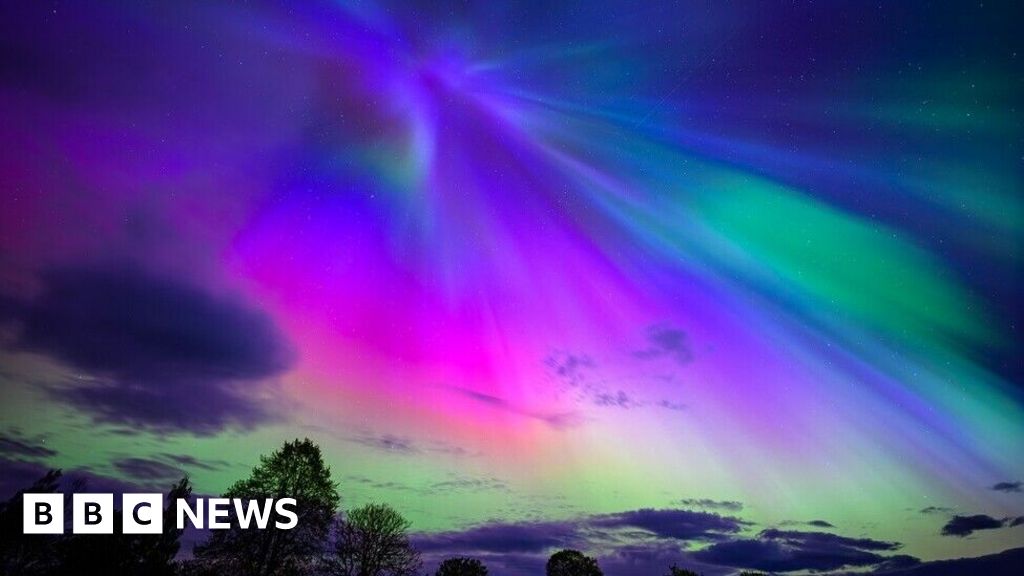Bussiness
Sky watchers thrilled by Northern Lights across Scotland – BBC News

Image source, John Thomson
The Northern Lights have made a rare appearance across Scotland and thrilled sky watchers across the country.
Pictures of the spectacular display, also known as aurora borealis, were widely shared on social media on Friday evening.
They could be seen after one of the strongest geomagnetic storms for years hit Earth, with the US National Oceanic and Atmospheric Administration (NOAA) issuing a rare solar storm warning.
Such storms increase the chances of seeing the natural phenomenon.
BBC Weather said clear skies made sightings possible from almost everywhere in the UK.
People in Northern Ireland, Scotland and northern parts of England usually have a higher likelihood.
Image source, Claire Meadows
What are the Northern Lights?
The Northern Lights – or aurora borealis – appear as bright, swirling curtains of lights in the night sky and range in colour from green to pink and scarlet.
The Southern Lights – aurora australis – are seen in latitudes near the South Pole.
The lowest part of an aurora is typically 50 miles (80 km) above the Earth’s surface. The highest part could be 150 miles (800km) above the Earth.
Image source, Norman Shulman
Image source, Paul Steven
Image source, Richard Harvey
What causes the Northern Lights?
Both the Northern and Southern Lights are caused by charged particles from the sun hitting gases in the Earth’s atmosphere.
They occur around the North Pole when the solar wind carrying the particles interacts with the Earth’s magnetic field.
The most impressive auroras occur when the Sun emits really large clouds of particles called “coronal mass ejections”.
“Picture this as a big sneeze by the Sun,” says Dr Affelia Wibisono, from the Royal Observatory in Greenwich. “It can contain up to a million tonnes of charged particles.”
Image source, Angela Kerr
Image source, Frank Roscoe
Image source, Rob Bradley
Image source, David Hampson
Image source, Dhruv Darji
Image source, Janice Peggie
Image source, Emma Lester-Smith






